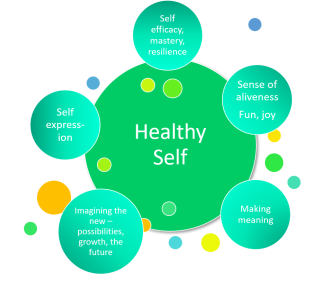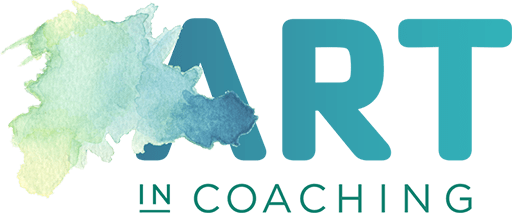In my previous blog ‘Is trauma present? The survival self in coaching’ I introduced Franz Rupert’s way of conceptualising trauma through the metaphor of the split psyche. Ruppert says that as a person experiences trauma their psyche starts to split into three – the trauma self, the survival self and the healthy self. In that blog I looked at the uncoachable survival self and noted that coaching works when both the client’s and the coach’s healthy self is present, and clients can access their healthy resources.
Our healthy resources
Our healthy resources include the following, and we will experience these in our client (and ourselves) when the healthy self is present:
- Being able to manage our emotions and responses appropriately (self-regulation) including both negative and positive emotions
- Being open to self-reflection
- Clear thinking
- Having a sense of aliveness, joy and fun
- Being aware of and being able to express our needs in a mature and confident way
- Taking responsibility for our own actions
- Being able to see the truth of our experiences and our aspirations
Creating spaces for the healthy self to be present
For clients to be able to access their healthy resources we need to create spaces where clients feel safe, where they can better self-regulate (manage their emotions and responses) and have greater clarity of thinking.
Julia Vaughan Smith describes the healthy self as that part of ourselves that is not affected by heightened stress levels and hyperarousal, and is present with ease. We encounter this aspect of our clients (and ourselves) most of the time in coaching but when coaching starts to stall or go wrong the survival self may be emerging and or be present.
Art in coaching and the healthy self
Art in coaching supports the healthy self in many ways.
The process of and experience of making art engages the body and the creative self, giving clients that sense of aliveness, joy and fun that is essential for connecting to felt experiences and supporting self-regulation.
The use of art also enhances non-verbal communication. It circumnavigates the limits of language and gives new ways to communicate when words are not enough or are not possible (Malchiodi, 2020).
Creating visual imagery offers a safe way for clients to express themselves and externalise, hold, talk about and connect with the areas they are working on. Then through exploring their image they can start to reflect on, connect to, understand and make sense of what may be complex and, possibly, frustrating or unsettling areas; ultimately being able to make meaning from those experiences. This in turn helps clients to imagine new possibilities for ways of being, for growth and for the future (Malchiodi, 2020).
In addition, art based coaching builds confidence through an increased sense of efficacy and mastery which also increases the capacity for resilience. (Malchiodi, 2020)

Diagram designed by Anna Sheather ©2021
Closing thoughts
Language is, of course, a necessary part of our communication, but we know that words are often only an approximation of our experiences. Words can fail us especially when it comes to our embodied and felt experiences. Ultimately words never quite manage to convey just how we experience the world around us and the impact it has on us.
Art is a language that we have used for millennia to express our place in the world and to make sense of it. We all have the capacity for creativity and although this may be to differing degrees, we can all express ourselves and there are many ways to do this.
Join the masterclass… If you would like to explore further why not join Julia Vaughn Smith and me on the next Trauma and Art Based Coaching online masterclass
References:
Trauma and Expressive Arts Therapy by Cathy Malchiodi, The Guildford Press 2020
Coaching Beyond Words by Anna Sheather, Routledge 2019
Coaching and Trauma by Julia Vaughan Smith, Open University Press 2019
Other related blogs:
Is trauma present? The survival self in coaching

